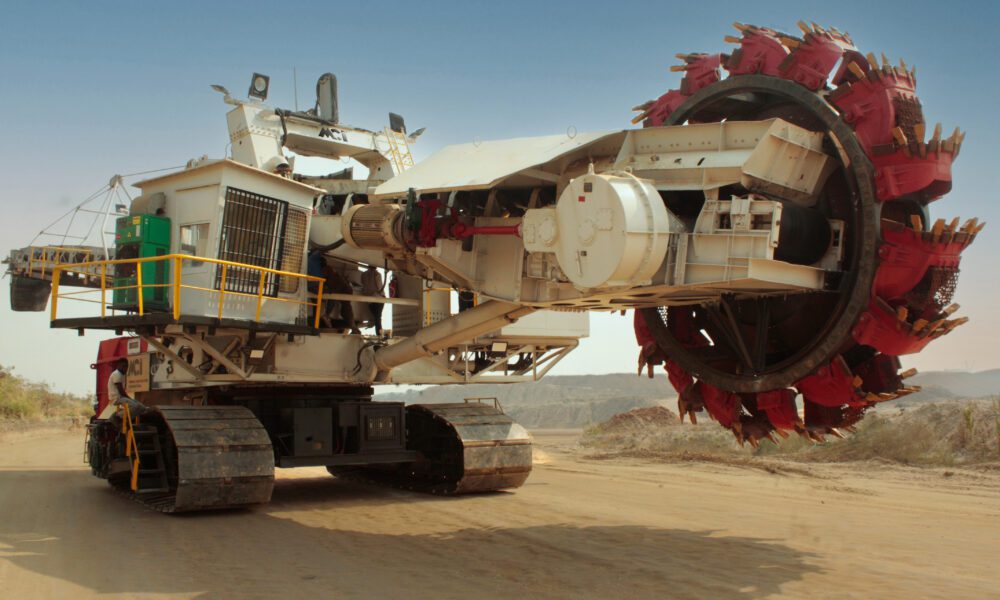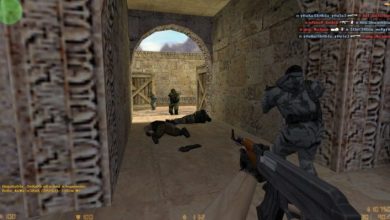Continuous mining with bucket‑wheel excavators: when electrified flow beats diesel cycles

Submitted by the MCI Engineering Team, MCI Mining Construction International GmbH. www.mci-austria.com
In the right kind of rock, a bucket‑wheel excavator (BWE) as part of a continuous conveyor‑based system can replace large fleets of diesel haul trucks. Instead of stop‑and‑go cycles, the mine gets a fully continuous, mostly electric flow of material from the face to the plant. This article explains, in clear language, what a BWE does, where it fits, what to watch out for, and how to plan a project so it works in the real world. It also clarifies terminology: BWE‑based continuous systems are not the same as IPCC; shovel‑/truck‑fed IPCC is semi‑continuous by design, because the mining unit still works in cycles.
What a bucket‑wheel excavator actually does
A BWE is a continuous mining machine. A large wheel with buckets digs the rock. The buckets empty into chutes, and the material falls onto conveyor belts. While this happens, the top part of the machine turns (slews) and the crawlers move forward. Because digging, loading and conveying happen at the same time, the output is steady—not stop‑and‑go like a truck‑and‑shovel setup.
BWEs are usually used for overburden and soft to medium‑hard rock in large open pits. The wheel sets the cut, the boom reaches the face, the superstructure provides motion and power, and the discharge hands the material to a belt wagon or a fixed transfer point. From there it goes to a crusher and then on an overland conveyor.
Main parts (quick tour)
A BWE combines five core assemblies that work as one system:
- Bucket wheel & buckets — geometry and number of buckets match the material and target lump size.
- Wheel boom — sets reach and attack angle; follows bench height and cut depth.
- Superstructure & drives — distribute power and host control and safety functions.
- Crawler undercarriage — spreads load and keeps the advance stable.
- Discharge & transfers — chutes hand material to a belt wagon or fixed transfer; often the hidden availability driver.
Where BWEs fit best
BWEs deliver their best results in deposits with wide benches, consistent material, and long push distances. Under these conditions the output stays steady, the energy path shifts from diesel to electricity via a conveyor‑based haulage chain (which usually lowers energy per tonne when grid power is available), and in‑pit traffic is simpler with less road maintenance and dust.
Not a fit when:
- Geology is very hard or highly variable and selective mining dominates.
- Pit life is short or frequent relocations are required.
- Geometry is tight (short faces, sharp turns) and breaks continuous advance.
Engineering choices that matter most
Success depends less on the biggest nameplate and more on fit to geology and mine plan. The cut geometry must match the block model: wheel diameter, bucket layout and boom motion should follow bench height and cut depth, otherwise bucket fill drops and wear rises. Drive sizing must consider short load peaks (hard inclusions, starts), not only averages, so motors and gearboxes keep thermal margin. Transfers deserve equal attention: the belt wagon hand‑off, chute geometry and liners often govern availability more than the wheel itself. Finally, controls and protections (cut‑parameter control, anti‑stall, profile protection) calm the flow and reduce shocks into the belts. Plan the conveyor/crusher/spreader line early, crusher locations, overland routes and belt‑wagon logistic; so the electrified chain stays smooth.
At a glance (key levers):
- Cut geometry aligned to block model (bench height, cut depth, face conditions)
- Drive sizing for peaks, not averages
- Transfer design as the primary availability driver
- Controls & protections to stabilise flow
- Early conveyor/crusher/spreader layout (crusher siting, overland routing, belt‑wagon moves)
Geology window (what the machine likes)
BWEs work best in unconsolidated and soft‑rock units: overburden, lignite/coal, sands and clays, marls, and weathered or marly limestones. If harder lenses appear, you can adapt with bucket design, cutting strategy and a realistic advance rate—but large, frequent hard zones will hurt performance and wear.
BWE‑based continuous conveying in practice
Shifting part of haulage to crushing and conveyors typically reduces fuel use and emissions and makes costs more predictable. With a BWE at the head of a continuous conveyor chain, sites often report:
- Steadier plant feed with fewer surge piles.
- Lower diesel exposure and the option to source lower‑carbon electricity.
- Less dust and noise on former main haul roads.
- Simpler logistics for tyres, fuel and road maintenance as traffic intensity drops.
Money and planning (plain facts)
Continuous systems put more capital into fixed or semi‑mobile gear, but cut the variable cost per tonne. Check: mine life, annual tonnage, bench continuity, access to grid power, how often you must relocate, and how much you value steady output. Test different cases (power price, utilisation, availability) to see how robust the plan is.
Honest limits
BWEs are not a cure‑all. Truck‑and‑shovel still wins in hard, changing geology, in short campaigns, and when you must mine very selectively. BWEs also need clean layouts (ramps, turn radii, continuous benches) and solid training and change management. Moving from cyclic to continuous changes how operators and maintenance teams work day to day.
Continuous vs. cyclic (quick compare)
In a BWE‑based continuous conveyor system the material flow is continuous. In classic truck‑and‑shovel it is cyclic (load → haul → dump → empty return). Shovel‑/truck‑fed IPCC sits in between: the belts are continuous, but the mining unit cycles, so utilisation depends on buffering and dispatch. Conveyors move material efficiently, while trucks also move their own mass and often return empty. The critical paths differ: continuous systems hinge on transfers and crushers; fleets depend on tyres, dispatch and road quality. Flexibility favours trucks for short, changing campaigns; high, uniform tonnage favours BWEs. Fewer trucks in the pit also means fewer interactions, an inherent safety advantage.
Automation and monitoring (useful, not magic)
Helpful tools include cut‑parameter control, anti‑stall, coordinated slew/advance, and condition monitoring (load, vibration, temperature). They increase availability and protect components. But they cannot fix poor geology fit or bad transfer design. Start simple, gather data, and then increase automation as the team gains trust in the limits.
Data, alarms and people
Focus on the signals that matter, load, vibration and temperature at bearings, gearboxes and transfer points. Avoid alarm fatigue by tiering notifications and showing trends, not just beeps. Link alarm histories to maintenance outcomes so thresholds and work instructions evolve into living parameters that fit the site.
Commissioning and ramp‑up (making it work on site)
Before first ore, run interface rehearsals: test transfers and crusher hand‑offs; check interlocks, belt speeds and communication timeouts. Start with conservative cut parameters, then raise advance as bucket fill stabilises and vibration/temperature stay within range. Keep operators and maintenance paired with controls engineers during the first weeks and document local SOPs early. Define utilisation/availability targets and clear rules for when to slow down instead of trip.
Common pitfalls (and fixes)
Under‑designed transfers cause blockages and mistracking—solve with geometry, liners and flow aids, not only bigger motors. Over‑optimistic geology leads to protection settings that fail during peaks—design for typical conditions and credible extremes. Controls in isolation increase trip rates—architect the system end‑to‑end. And maintenance is a design topic: plan access and wear‑part changeouts at design time; late retrofits are costly.
Checklist before you commit
- Geotechnical window: define strength ranges and variability.
- Mine‑plan continuity: ensure bench heights and push lengths allow smooth advance.
- System integration: align BWE, crusher type/location, belt wagon moves and overland routing early.
- Power & decarbonisation: confirm grid capacity and real emissions factors—conveyor‑based haulage needs reliable electricity.
- People & change: train operators and planners; phase the rollout.
Bottom line
In the right geology, continuous beats cyclic. A BWE that is well matched to the deposit and fully integrated with IPCC can lower diesel use, keep plant feed steady and simplify in‑pit logistics. In the wrong geology or for short jobs, truck‑and‑shovel is still the better choice. The choice is about system engineering, not brand loyalty.
Submission note / credits
Submitted by the MCI Engineering Team (MCI Mining Construction International GmbH).
Source: www.mci-austria.com
Editor resources available on request: definitions of BWEs, IPCC basics, and examples of conveyor condition‑monitoring in mining.

Source: Continuous mining with bucket‑wheel excavators: when electrified flow beats diesel cycles


